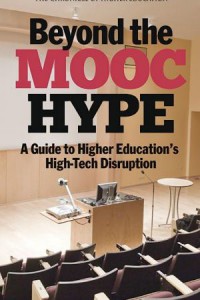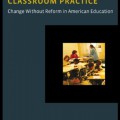 A new book takes a detailed look at the state of Massive Open Online Classrooms (MOOCs), finding they are neither a passing fad nor the savior of higher education.
A new book takes a detailed look at the state of Massive Open Online Classrooms (MOOCs), finding they are neither a passing fad nor the savior of higher education.
However, the book finds, they could change how professors teach at the most basic level.
In “Beyond the MOOC Hype,” Jeffrey R. Young – a technology editor at the Chronicle of Higher Education – delves into the ongoing debate about how MOOCs will fit into the future of education.
The book, according to the description on Amazon, focuses its content on “six big questions”: what is a MOOC, where did MOOCs come from, what is the business model for a MOOC, will MOOCs change campus teaching, why do some educators object to MOOCs and free courses and perhaps the most important question: do MOOCs work?
Those questions could have importance to those considering taking business classes. Online education already affords students more flexibility in how and when they attend classes, providing them an opportunity to schedule classes around family and work.
MOOCs take online education beyond this, offering their courses for free. Some companies now offer students a chance to pay a fee and get a certificate proving they passed a test at the end of the MOOC course.
In his book, Young goes beyond the financial implications of MOOCs. He offers an in-depth look at how MOOCs are changing education at a fundamental level, offering students a different way of learning.
Young writes that the current form of teaching has been passed down for generations. The accepted method – even with the addition of tools such as PowerPoint – is that “a professor talks, large numbers of students listen, and one or two brave souls ask questions in the final moments. Class dismissed,” according to a book excerpt published on the Chronicle of Higher Education website.
Officials with Harvard University and the Massachusetts Institute of Technology, who joined together to form the MOOC company edX, have said from the start that part of the reason for going forward with the initiative was to test new methods of teaching.
Sanjay Sarma, who heads the MOOC effort at MIT, said at a conference this summer that “surely something’s got to change in 1,000 years,” noting that the current form of lecturing has been around since at least the founding of the University of Bologna in 1088, according to the book.
One hope mentioned by Sanjay (and in numerous other places) is that having an online component can speed up delivery of basic information and facts, freeing up more classroom time for students to have discussions and work on projects together.
This concept, called the “flipped classroom,” calls on students to watch video lectures for homework and spending classroom time interacting.
The book cites one such effort by a Vanderbilt University professor who, tired of simply lecturing, used a video lecture series for a computer database course done by a professor at Stanford University. He asked students to watch those lectures, then gave them a quick quiz when they entered class to make sure they had done the homework assignment. He then could use classroom time as a “design studio,” giving students the chance to apply what they had learned in the lectures to creating and reviewing database designs.
Young goes on to write about other MOOCs where professors from different schools have combined efforts to produce video lecture series, something unheard of not that long ago.





